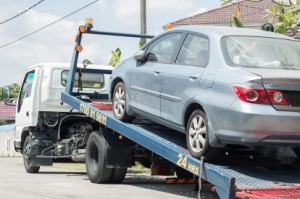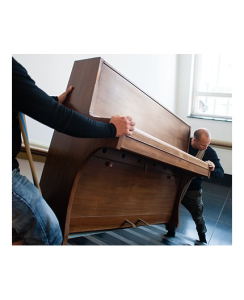Towing involves transporting vehicles that cannot move under their power from one location to another. This can be necessary for several reasons, including roadside emergencies and accidents.
Certain rules and tips can help make towing safe and efficient. These rules include knowing your truck and trailer’s GCM (Gross Combination Mass). This weight includes the vehicle and the trailer. Click https://www.aztecatowingarizona.com/ to learn more.

While the towing industry has evolved into a complex operation with many different vehicles and equipment, there are a few common issues that can arise. These can range from damage to a vehicle or trailer to miscommunication between a towing company and the driver. The most important factor in preventing these issues is identifying them early and addressing them as soon as possible.
One of the most common problems occurs when a tow truck’s cables are damaged or worn-down. This can happen for several reasons, including road debris or even a damaged connection point. Using quality cable is essential for towing, as is having a good maintenance plan in place. Performing regular inspections and replacing parts can help prevent this issue from occurring.
Another common problem occurs when a trailer begins to sway or snag on the roadway. When this happens, it is important to remain calm and focus on identifying the cause of the sway. While it may be tempting to apply the brakes and try to steer the trailer out of a sway, this will only exacerbate the situation. Instead, drivers should slow down and carefully check the swaying trailer for any signs of trouble, such as a loose or damaged tire.
In addition to identifying the problem, drivers can also avoid these issues by practicing their towing capabilities. Finding an empty parking lot and working through maneuvers such as turning, braking, and backing up can be helpful. This can help a driver become more familiar with the towing process and can also clue them in on any areas that need improvement.
As trucking interests work to cut down on predatory towing practices, fleets should be prepared to contest excessive invoices that may be sent their way. Bowen recommends that fleet owners start by looking at the rate structure in place, such as hourly rates and whether or not these include a minimum charge no matter how long the tow takes. She also advises fleet owners to look at any charges that are not related to completing the tow, such as equipment charges.
Preparing Your Vehicle
Whether you’re moving, relocating, or have an emergency that requires long-distance towing, it’s important to prepare your vehicle in advance. This will help to reduce stress and save you money by ensuring that your vehicle is ready for the road. This can be done by removing your personal belongings, checking the trailer hitch and safety chains, and performing routine maintenance to ensure that your car will run smoothly while being towed.
The first thing you need to do is gather all of your valuables and remove them from the vehicle. You may be without your car for a few hours, and the towing company may not offer any form of insurance for stolen items. In addition, leaving your possessions in the vehicle could cause further damage during transit. It’s best to remove all items from the vehicle and even take pictures of the condition of your car before it gets towed.
You should also check your trailer hitch and safety chains to make sure they’re in good condition. It’s recommended to use heavier-duty chains and hooks for longer hauls, as the regular ones are prone to wear and tear over time. Also, the towing vehicle’s engine will work harder during towing, so it’s best to have a full tank of coolant and an adequate level of brake fluid.
Once you’ve completed these tasks, it’s time to test the trailer hitch. Choose a quiet area to do this, and be sure to use the proper procedures for hooking up the trailer. For example, always hand-tighten the coupler to ensure that it’s securely fastened. Then, slowly accelerate and brake the towing vehicle to see if it remains stable.
It’s a good idea to have a partner with you during this process, as they can help you keep your eyes on the road while you’re testing the towing vehicle and trailer. It’s also important to remember that it takes much longer to slow down when you have a trailer attached, so it’s vital to increase your following distance and avoid sudden acceleration or braking. It’s also a good idea to wear your seat belt while driving with a trailer attached, as this will protect you in the event of an accident.
Calling for Help
There are times when a vehicle is in danger or has a problem that requires the help of a professional. This is when the services of a tow truck are needed. For example, if a car has been in an accident and is in critical condition or if it has been illegally parked and is obstructing traffic flow, the towing service will need to be called.
When calling for help, the dispatcher will ask what the problem is. It is important to be as clear and detailed as possible. This will let them know whether they should send a light or heavy duty tow truck or some other type of service. It is also helpful if you can tell them where you are, such as an intersection or address.
You should also tell them if you need immediate assistance or not. Sometimes, cars are towed for parking in areas they shouldn’t be or for ignoring “no parking” zones or street sweeping schedules. These vehicles need a quick tow and shouldn’t wait.
If you are enrolled in a roadside assistance plan, the dispatcher will also want to know what the details of your coverage are. For example, some plans pay for the services of a tow truck, mechanic or locksmith directly, while others require you to pay out of pocket and submit receipts for reimbursement.
